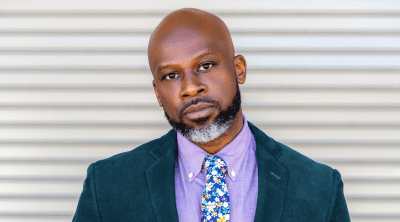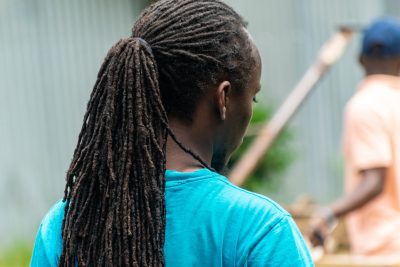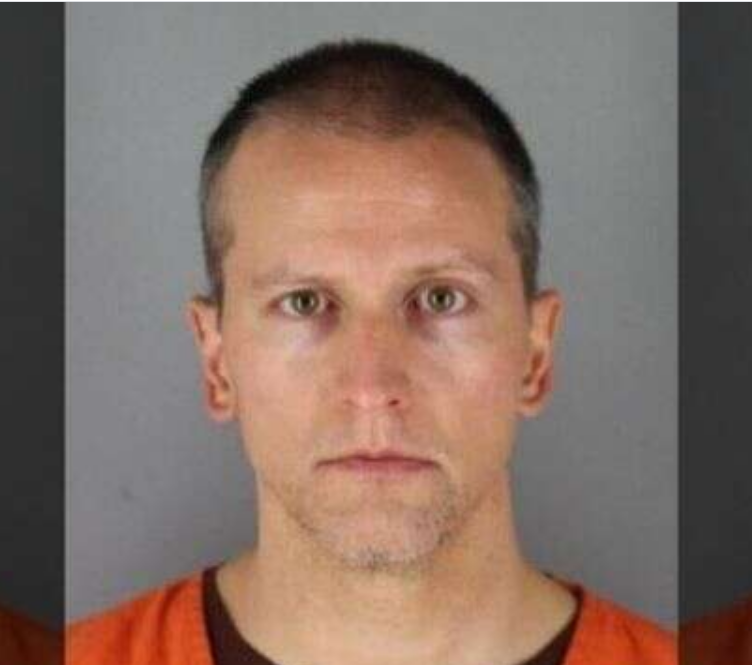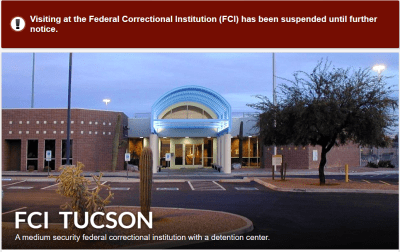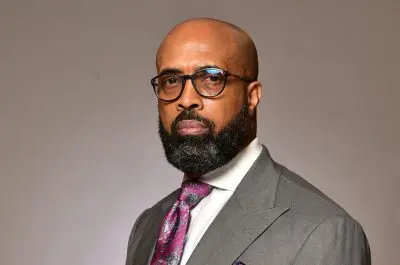Police brutality is an ongoing and acutely volatile issue in the United States. Despite numerous cases of officers using excessive force against civilians, little to no action is taken against the officers responsible. This is due in large part, to the so-called blue code of silence among the men in blue. This code of silence is a form of loyalty that encourages officers to protect each other, regardless of the severity of the actions they take to get results. This errant system leads to officers being able to get away with brutality and misconduct with little to no
consequences. This must change if we are to make any progress in addressing this issue of law enforcement officials adhering to a code of conduct.
Black Officers adhere to the Blue Code against their own community.
Police brutality refers to the excessive use of force by police officers. This issue has been around for many years and has only gotten worse. Police officers have been using excessive force for
centuries, and the issue has only become more prevalent in recent years. There are many reasons for this, but one of the main reasons is the lack of accountability for police officers.
There have been many instances of police brutality over the years. Some of the most famous cases include the Rodney King case and the Ferguson riots. In both of these cases, the police
officers were not held accountable for their actions. This lack of accountability has been a major problem in the fight against police brutality. But people took their passionate protests about the killing of Black men at the hands of white police officers to the streets.
But, in the case of 29-year-old Tyre Nichols, who died at the hands of five Black police officers following a traffic stop, change the standard or somehow color the use of lethal force? Absolutely not. The five Black officers involved in the incident were terminated last week and booked into jail on Thursday, Jan. 26 on charges including murder, assault, and kidnapping in connection to Nichols’ death. Since Thursday’s arrest, four of the officers — Justin Smith, Desmond Mills Jr, Emmitt Martin III, and Tadarrius Bean — have been released on a combined $1 million bond,
Many people have spoken out against police brutality, and there have been some changes made against overly zealous and violent officers in recent years. However, there is still a lot of work to be done. Police officers need to be held accountable for their actions, and the public needs to be more aware of the issue. Only then can we hope to put an end to police brutality.
Police brutality is a real issue in the United States. It’s something that has been going on for years, and it doesn’t seem like it’s going to cease any time soon. There are a lot of people who are
affected by police brutality, and it’s not just the people who are getting hit or shot by the police. It’s also the people who are watching it happen.
Police brutality is a problem because it’s a violation of citizens’ rights. People have the right to be safe and to be treated fairly by the police. When the police use violence or excessive force,
they’re not living up to their end of the bargain. They’re not providing safety or justice.
Police brutality is also a double-edged-sword problem because it can lead to more violence. When the police use violence against people, it can make the people angry. They may want to retaliate against the police, and that can lead to more violence. Police brutality can also lead to riots and protests. The police – White or Black – need to be held accountable for their actions, and they need to be trained to use force in a way that is safe and effective.
In the police department, the blue code of silence is unspoken law. Officers do not rat out on their fellow officers, no matter what they have done. This code of silence protects corrupt officers and
allows them to get away with their crimes. When an officer breaks the code of silence and reports a fellow officer, they are often ostracized by their fellow officers. They may be labeled a snitch
or a rat. This can have a serious impact on their career and make it difficult to advance in the department.
The blue code of silence is a powerful force in the police department. It allows corrupt officers to get away with their crimes and protects them from being held accountable. Officers who break the
code of silence often face significant backlash from their fellow officers. This can have a serious impact on their career and make it difficult to advance in the department.
Police brutality is not a new issue. It has been around for as long as law enforcement has been in existence. However, in recent years, it has gained more attention as videos of police officers
using excessive force against civilians have spread throughout social media. This attention has led to a national conversation about the use of force by law enforcement and the need for reform.
One of the earliest examples of police brutality can be found in the history of the United States. In 1871, the Civil Rights Act was passed, which gave African Americans the right to equal treatment
under the law. However, this did not stop law enforcement from using violence against black Americans. For example, in 1892, a group of white policemen in Louisiana killed 11 African-Americans who were protesting against the lynching of a black man.
Throughout the 20th century, police brutality continued to be a problem. In 1965, the Watts riots in Los Angeles erupted after a group of black Americans were stopped by police for no reason.
The police responded by using excessive force, which led to several days of rioting. In 1991, the Rodney King case brought national attention to police brutality against black Americans. King was
beaten by a group of white police officers, and the video of the beating was aired on national television. This led to the 1992 Los Angeles riots, which were some of the most violent riots in
U.S. history.
In recent years, the issue of police brutality has gained even more attention. In 2014, the shooting of Michael Brown in Ferguson, Missouri, sparked protests across the country. Brown was shot by a white police officer, and the shooting was captured on video. The protests continued for months, and they eventually led to an acute awareness of transgressions against Black people all over the country – but that may be law enforcement legacy.
The first police force in the country was established in Boston in 1838, and officers were given broad authority to use force to maintain order. Over time, police brutality became increasingly common, and by the late 19th century it was seen as a serious problem. In response, various reform movements called for an end to police brutality and for greater accountability and transparency from law enforcement officials. While some progress has been made over the years, police brutality remains a serious issue in every nook and cranny of the country.
However, the modern form of police brutality began to emerge in the 1960s. The Civil Rights Movement led to an increased awareness of police brutality and its effects on minority communities. This led to a series of protests and riots across the country. In response, the federal government began to pass legislation to protect civil rights and to regulate the police. However, police brutality
continues to be a problem today.
Police brutality is a persistent problem in the United States. Although there have been many attempts to address the issue, it continues to this day. One of the main reasons for this is the lack
of accountability for officers who engage in this behavior. When an officer is caught usingmexcessive force, they are often given a slap on the wrist or are allowed to resign. This sends a
message to other officers that they can get away with this behavior. As a result, the cycle of police brutality continues.
There is no question that the use of excessive force by police officers can have a devastating effect on the communities they are sworn to protect. In the aftermath of high-profile incidents of
police brutality, such as the shooting of Michael Brown in Ferguson, Missouri, or the death of Eric Garner in New York City, many people have spoken out about the need for reform.
There is overwhelming evidence that police brutality disproportionately affects African-American and other minority communities. A study by the Malcolm X Grassroots Movement found that
African-Americans are killed by police at a rate of one every 28 hours. This is a shocking statistic, and it underscores the need for reform.
Police brutality can have a number of negative consequences for communities, including a decreased sense of safety and trust, and a reluctance to cooperate with law enforcement. When
people feel that they are being unfairly targeted or brutalized by the police, they are less likely to report crimes or to cooperate with investigations. This can have a ripple effect on public safety
and can ultimately make the community less safe.
Police brutality can also lead to civic unrest. When people feel that the police are not acting in their best interests, they may take to the streets to voice their concerns. This can lead to violence
and chaos, and it can put innocent people at risk. It is clear that police brutality has a number of negative consequences for communities. We must
work to reform our police departments so that everyone can feel safe and protected.
Police brutality can have physical and emotional effects on victims. Physical effects can include cuts, bruises, and broken bones. Emotional effects can include fear, anxiety, and Post-Traumatic
Stress Disorder (PTSD). Victims of police brutality may also experience a loss of trust in law enforcement.
Police brutality can have significant psychological effects on victims and their families. The National Institute of Justice notes that these effects can include "anxiety, depression, post-.
traumatic stress disorder, and suicide. In addition, victims may struggle to trust authority figures, and may feel unsafe and isolated.
For families of victims, the psychological effects can be just as devastating. They may feel intense anger and frustration and may struggle to cope with their loss. They may also feel that
their loved one’s death was preventable, and question why the police officer involved was not held accountable.
Police brutality can have a number of social effects on victims and their families. Victims may feel scared and alone, and may feel like they can’t trust the police. They may also feel like they can’t
trust anyone. This can lead to them feeling isolated and alone.
For families of victims, police brutality can be very traumatic. They may feel like they are not safe, and may worry constantly about their loved one. They may also feel like they are not being heard. This can lead to a lot of stress and tension within the family.
The blue code of silence. It’s a term used to describe the unspoken agreement among law enforcement officers to not report misconduct by their fellow officers. It’s a brotherhood that’s
stronger than any oath of office. And it’s a code that’s been broken before, with disastrous consequences.
But what happens when the code is broken again, this time by one of the most decorated officers in the department? That’s what Detective Danny Reagan is about to find out.
After a high-profile case goes wrong, Danny is faced with evidence that suggests his partner, Jackie, may have been involved in a cover-up. Danny knows he can’t just ignore it, but he also
knows that going against the blue code could cost him his career.
And so he does the only thing he can think of. He turns to his former partner and good friend, Frank Reagan, for help. But even Frank may not be able to protect Danny from the powerful
forces within the department.
The blue code of silence is a term that is used to describe the unspoken rule among police officers to not report on the misconduct of their fellow officers. This code of silence can be traced
back to the early days of policing, when officers were more likely to be killed on the job than today. There was a sense of brotherhood among officers and a belief that they needed to protect
each other in order to survive. This code of silence has been cited as a factor in police corruption and the failure of police departments to address officer misconduct.
Blue code of silence is a term used to describe the unwritten rule among police officers to not report on the wrongdoings of their fellow officers. This rule can be traced back to the early days of
policing, where officers were required to protect each other in order to maintain the image of the police force. The blue code of silence is often cited as a reason for the lack of police
accountability.
Despite the existence of the blue code of silence, there have been a number of cases where officers have reported on their fellow officers' misconduct. One of the most famous examples is
the case of Frank Serpico, a New York City police officer who blew the whistle on corruption within the NYPD. Serpico's case brought national attention to the issue of police corruption and
led to the establishment of the Knapp Commission, which investigated the issue.
Officers stick to the blue code of silence for a variety of reasons. One reason is that they feel like they are part of a brotherhood and are loyal to their fellow officers. They also may be scared of
retaliation if they speak out against another officer. Finally, they may not want to get themselves into trouble by speaking out about something they may not know about.
This code is used to protect officers from being accused of wrongdoing. This code is also used to protect officers from being accused of lying. Officers who break the code can be punished by their
department.
There are many possible solutions to the problem of climate change. Some people advocate for government regulation, while others call for more research and development of green
technologies. Still others believe that the free market will eventually find a way to solve the problem. Each of these solutions has its own advantages and disadvantages.
Government regulation could be effective in reducing emissions, but it could also be expensive and bureaucratic. Research and development of green technologies could lead to break throughs
that reduce emissions, but it could also be expensive and take a long time to implement. The free market could eventually find a way to reduce emissions, but it could also lead to increased
emissions if it fails to find a solution.
Ultimately, there is no one-size-fits-all solution to the problem of climate change. Each of the solutions mentioned has its own strengths and weaknesses. It is up to individual countries and
communities to decide which solution is best for them.
Community involvement is key to the success of any organization. For businesses, it is important to engage the community in which it is located to foster a sense of ownership and responsibility.
This can be done through various means, such as sponsoring community events, participating in local charities, and hiring from the local community.
When it comes to blockchain technology, community involvement is just as important. The blockchain is a decentralized technology that relies on the participation of its users. The more
people who use the blockchain, the more valuable it becomes. This is why it is important for blockchain companies to engage the community and get them involved in the project.
There are a number of ways to get the community involved in a blockchain project. One way is to hold a hackathon. A hackathon is a competition in which programmers and developers compete
to create the best blockchain-based solution to a problem. This is a great way to get the community involved and to generate excitement around the project.
Another way to get the community involved is to host a contest. A contest can be held for anything, such as designing a logo, coming up with a name for the project, or creating a video
explaining the project. This is a great way to get the community involved and to get them excitedabout the project.
Finally, it is important to engage the community in the development of the project. The community can be involved in various ways, such as voting on features, submitting ideas, and testing the
software. This is a great way to get the community involved and to get their feedback on the project.
Professional standards are the guidelines that professionals use to make decisions and set the level of care they provide. There are different types of professional standards, such as ethical
standards and legal standards. Ethical standards are the codes of conduct that professionals agree to abide by. They are designed to protect the public and ensure that professionals provide
quality care. Legal standards are the laws that professionals must follow. They are designed to protect the public and ensure that professionals provide safe care.
When an organization is hit with allegations of criminal activity, it is critical to conduct a timely and thorough internal investigation. This process can help the organization identify any potential
criminal conduct and take appropriate corrective action. An effective internal investigation must be well-organized and carefully planned. It should involve a team of experienced investigators who are familiar with the organization’s operations and the applicable laws. The investigators should be able to collect and analyze evidence quickly and
efficiently.
The goal of an internal investigation is to determine whether criminal activity has occurred and, if so, to identify the responsible individuals. The investigators must be able to identify any potential witnesses and evidence, and must carefully examine all of the relevant facts and circumstances. The internal investigation should not be conducted solely by the organization’s legal department. It should be led by experienced law enforcement professionals who are familiar with criminal investigations.
The internal investigation should be conducted in a confidential manner, and the results should be reported to the appropriate authorities. The organization must also cooperate with any law
enforcement investigations that may be underway. An internal investigation can be a daunting task, but it is critical for the organization to take appropriate action to protect its employees and its shareholders.
Black police officers are not immune to the Blue Code of Silence and will often participate in police brutality against Black civilians. This phenomena has been well documented and is a major
contributor to the distrust that Black communities have towards the police. Until this issue is addressed, the relationship between Black communities and the police will continue to be strained.


